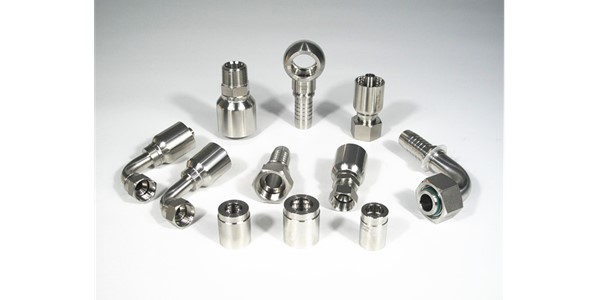
Hydraulic hoses find application across various industrial sectors, boasting diverse types including reinforced, coiled, corrugated, or convoluted, crafted from materials like elastomer, fluoropolymer, silicone, thermoplastics, and metal.
The selection process for the ideal hydraulic hose can prove intricate, considering factors such as materials, applications, and pressure ratings. Equally crucial is the selection of appropriate hydraulic fittings for your system. Upon determining the hydraulic hose suited for your needs, the subsequent task involves establishing a secure, dependable, and leak-resistant connection.
Seven Things to Consider When Picking the Hydraulic Fittings:
- Size–When considering size, it’s crucial to assess the internal and external diameters of hydraulic fittings. Compatibility with the hydraulic hose diameters is paramount. Fittings that are either oversized or undersized won’t achieve proper sealing, leading to potential connection failure or leakage.
- Material— The choice of material significantly impacts compatibility with the fluid and the working environment. Ensure compatibility with both factors by selecting from materials such as brass, steel, or stainless steel. O-rings made from NBR (Nitrile) are commonly utilized as sealing materials due to their effectiveness.
- Temperature–Besides material resistance, suitability for operating temperatures should be evaluated when selecting hydraulic fittings.

4. Pressure–Different industries and applications entail varying pressure requirements for hydraulic fittings. It’s essential to choose fittings rated for the required pressure range to prevent leaks and potential hazards in the working environment.
5. Application–Depending on the specific industry or application, hydraulic fittings may serve purposes such as mixing or distributing. Fitting types like straight and elbow should be considered accordingly.
6. Assembly–Hydraulic systems that require frequent connections and disconnections of the hose or tube should consider quick-connect fittings. For instance, hydraulic compression fittings can also remove the need to weld or solder the fitting. It uses a compression nut that tightens against the ferrule, creating a tight seal.
7. Permanence–The intended permanence of the fitting influences the fitting style choice. For frequent changes, field attachable fittings suffice, while for permanent and robust connections, utilizing a crimping machine to crimp fittings permanently is recommended.

By carefully considering these factors, you can choose the right end fittings for your hydraulic hose, ensuring safe and reliable operation in your hydraulic system. If you’re unsure about any aspect, it’s always a good idea to consult with QC Hydraulics.
